Thirty reasons everyone should visit the incredible Rainbow Nation
I’m still getting over the fact I missed the most monumental story of my journalism career.
In February 1990, years before I became a dual South African-Australian citizen, I spent a week blissfully off-grid in Kruger National Park. There was no radio signal, so I couldn’t tune in to my colleagues’ news broadcasts.
On the drive back to Johannesburg I saw the headline poster propped outside a roadside cafe: Nelson Mandela had been released after 27 years in jail.
The only consolation for my ignorance of the most pivotal moment in South Africa’s history was the memory of the divine wilderness I’d been visiting at the time.
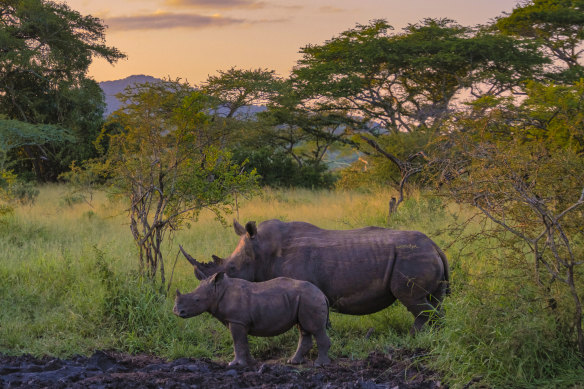
Blissfully off-grid … Kruger National Park.Credit: iStock
At dawn, my now-husband and I had listened to the haunting call of an African fish eagle.
At sunset, we watched elephants gathering to drink. We saw a pack of 40 endangered, famously elusive African wild dogs sunning themselves in broad daylight, as though reclaiming their territory.
These embattled creatures were living free – the perfect analogy for the events unfolding in our country.
Four years later, on April 27, 1994, I was up again at dawn – not to hear the fish eagle’s cry, but to report on the country’s first democratic elections. Mandela was elected president, and the rest is a somewhat complicated history. The Rainbow Nation is still a work in progress.
For visitors, safety is the biggest concern; Smartraveller recommends taking sensible precautions including not venturing out alone at night, and using major roads where possible.
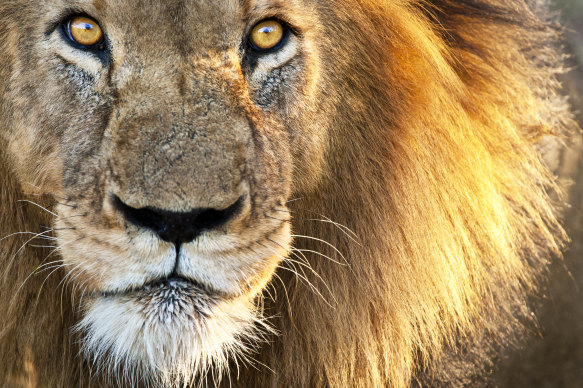
Wild at heart … South Africa.Credit: iStock
Rolling power outages (known as “load shedding”) are a nuisance for visitors, and worse, of course, for South Africans, but most hotels have back-up generators. If they fail, rest assured a rainbow will almost certainly follow the darkness in this warm, optimistic and resilient country.
Thirty years after South Africa’s first democratic elections, we look at 30 ways for the enthusiastic first-timer to the devoted repeat visitor and everyone in between, to experience and celebrate Nelson Mandela’s Rainbow Nation.
The first-timer
Go for gold
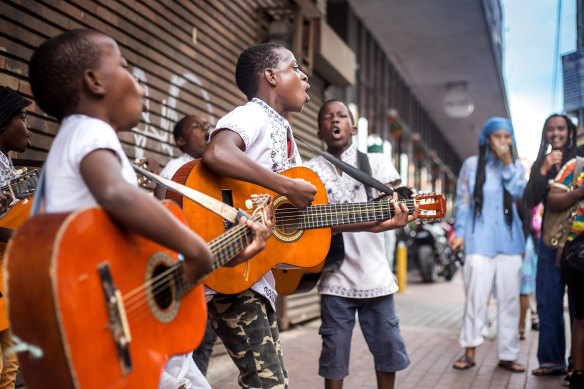
Buskers in Johannesburg.Credit: iStock
Jozi (Johannesburg, in Gauteng province) will surprise you with its self-assurance and verdancy. Take the high speed Gautrain from OR Tambo Airport to Rosebank and jump on City Sightseeing’s hop-on hop-off bus. The Johannesburg Red Tour stops at attractions including the Mandela Foundation, Constitution Hill, the Apartheid Museum and Gold Reef City, where Egoli’s (the City of Gold’s) mining origins are commemorated. Detour to the inner-city Maboneng Precinct and switch to the Soweto shuttle for a side-trip to Vilakazi Street, the only street in the world on which two Nobel Prize winners – Mandela and Desmond Tutu – lived. See citysightseeing.co.za/en/joburg
Take five – the Big Five
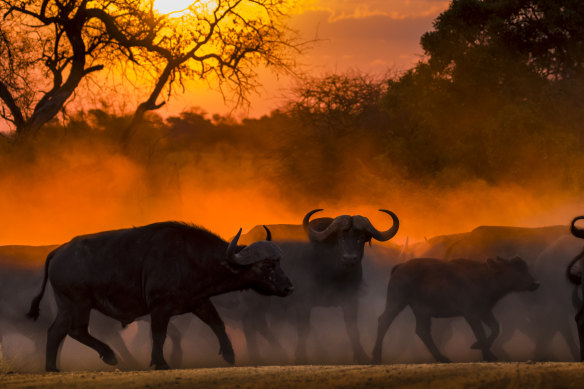
Buffalo at sunset … Kruger National Park.Credit: iStock
That bone-deep longing for the wild is quelled at Kruger National Park, a reserve so immense it’s larger than some European countries. Wildlife is so prolific here you’re almost guaranteed to see the Big Five (lion, leopard, elephant, rhino and buffalo). Bench Africa offers guided safaris in both Kruger and in the private reserves adjoining the park. See sanparks.org/parks/kruger; benchafrica.com
Where the Table is set
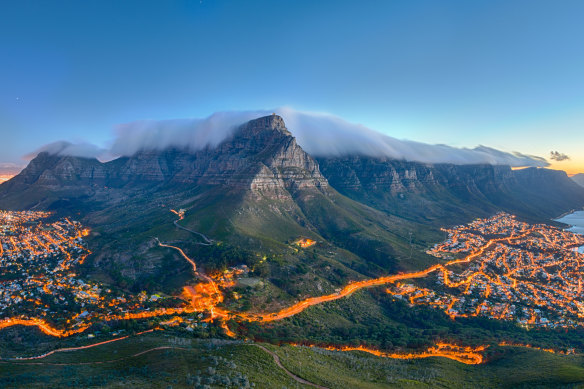
Table Mountain covered by its typical cloud table cloth.Credit: iStock
South Africa’s most beautiful city wraps itself around the magisterial centrepiece, Table Mountain. Wait for the “table cloth” of clouds to shift before making your way up by cable car. From here you’ll see the expansive city and Robben Island, where Mandela was incarcerated; later, catch a ferry there for a tour of the island and a poignant look inside Madiba’s jail cell. See tablemountain.net; robben-island.org.za
Slowly does it on the gold rush route
The 100-kilometre Panorama Route crests dramatic mountain passes and twists through historic gold rush towns on its way to the main attraction: the Blyde River Canyon (Motlatse Canyon). The world’s greenest, and third-largest, canyon is cloaked in sub-tropical foliage; the velvety Blyde River swells between its sandstone ravines. Savour the views at the God’s Window lookout, and teeter above Bourke’s Luck potholes, a honeycomb moulded where the Blyde (“happy”) and Treur (“mourning”) rivers meet. See southafrica.net
Go for a ride on the wild side
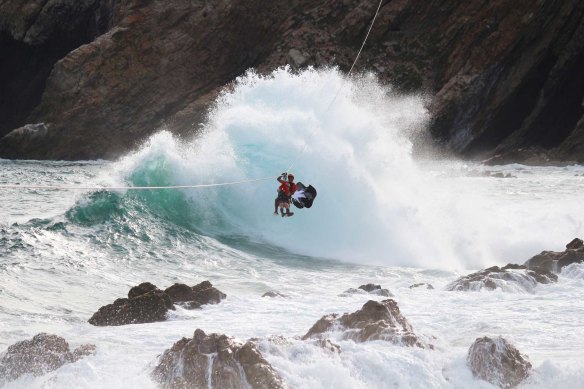
Fly across the water on the world’s longest over-ocean zipline.Credit: Mossel Bay Zipline
The wild Atlantic Ocean ripples beside you on the 200-kilometre Garden Route, so named for its luxuriant beauty. The journey begins in Mossel Bay, where adrenaline junkies fly across the water on the world’s longest over-ocean zipline. On the road ahead lie historic seaside villages, artists’ haunts, estuaries and primordial forest bordered by mountains. Travel in June to catch the Knysna Oyster Festival, and complete the journey at Storms River, where you’ll see those adrenaline junkies plummeting from the world’s highest bungee jumping site, Bloukrans Bridge. See garden-route-info.co.za
The wildlife and nature lover
Where hyenas howl
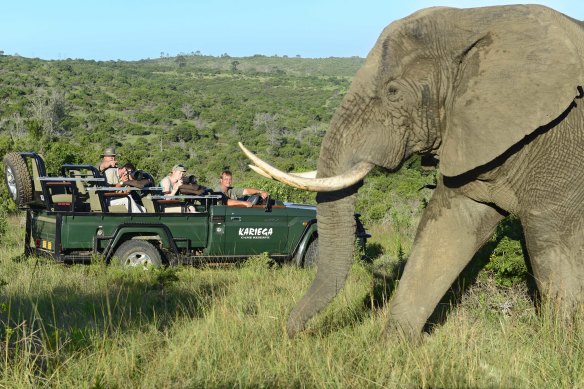
Wildlife has made a triumphant return to Kariega Game Reserve.
Nature has made an extraordinary comeback at Kariega Game Reserve in the Eastern Cape; once a collection of 21 farms, it’s now a regenerated wilderness where the Big Five roam free. Choose from among five lodges, including the luxury tented camp Settlers Drift, where you’ll fall asleep to the howl of hyenas. A highlight of The Africa Safari Co’s tour includes a cruise to the mouth of the Bushman’s River at Kenton-on-Sea. See africasafarico.com.au
To the land of flower power
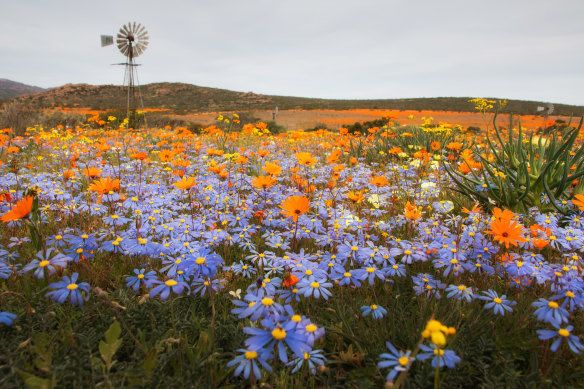
The arid Northern Cape is awash with colour in spring … wildflowers in Namaqualand.Credit: iStock
Spring washes the arid Northern Cape in colour when Namaqualand daisies and thousands of other wildflower species muscle in on the succulents and fynbos typical of the region. Begin your road trip in Namaqua National Park, six hours’ drive north of Cape Town, and journey south for the best views of the flowers’ wide-open faces. Don’t miss the Hantam National Botanical Garden near Nieuwoudtville; this “bulb capital of the world” is also good for hiking. See cedarberg-travel.com
Happy feet with a happy ending
The endangered African penguin’s last stronghold, St Croix Island, is a scrap of rock in Algoa Bay near Gqeberha (Port Elizabeth). Here thousands of the pint-sized, braying creatures do their best to proliferate after their near-extinction in the 20th century. See them on a cruise with Raggy Charters along with the bottlenose dolphins and whales that also inhabit these waters. See raggycharters.co.za
Not pretty but pretty amazing
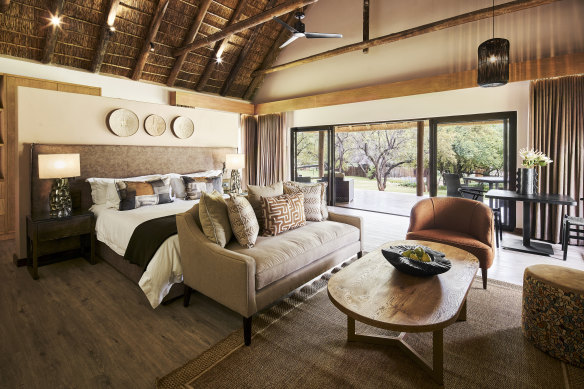
Between birdwatching excursions, relax in luxury at Qwabi Private Game Reserve.
With their bulging wattles and ruddy periorbital skin, southern ground hornbills aren’t the prettiest of creatures. But these endangered birds are among nature’s treasures in Limpopo province’s Waterberg Biosphere Reserve – one of Africa’s two UNESCO-declared savannah biospheres. San rock art is found among the sandstone gorges; you can also see the Big Five on safari at Qwabi Private Game Reserve, a two-and-a-half hour drive from Pretoria. See newmarkhotels.com
Secret rhino business
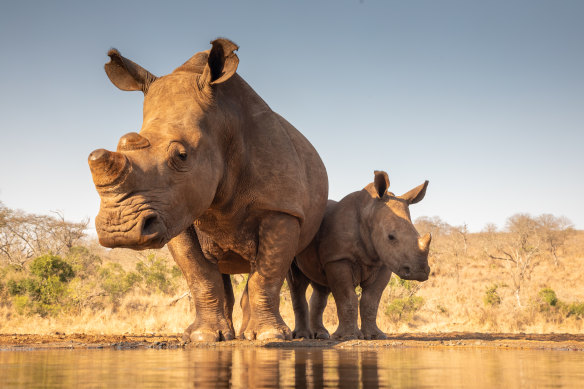
Endangered rhinos are the “elephant in the room”.Credit: iStock
Rhinos are the proverbial elephant in the room. Nearing extinction, their precise numbers are kept confidential and visitors are asked not to geotag their photos lest poachers be alerted to their whereabouts. Conservation-savvy guests can get the inside story on a journey in the Waterberg and KwaZulu-Natal with Angus Begg, an award-winning TV producer and photojournalist-turned private safari guide. See hartleys-safaris.co.za
The food and wine connoisseur
Making a meal of Mandela
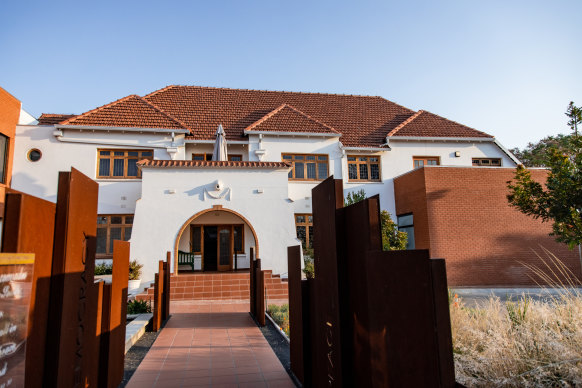
Sanctuary Mandela, Johannesburg.
Madiba’s favourite meal? Umngqusho, a traditional dish made from samp (pounded corn), which his personal chef, Xoliswa Ndoyiya, made for him thrice weekly. She still serves a version of it at Sanctuary Mandela’s restaurant, Insights. The Johannesburg hotel is located in the house Mandela moved to soon after his release from jail. Among menu delights inspired by his tastes are snoek frikkadels (meatballs), biltong-crusted sirloin topped with marrow butter and Amarula-spiced trifle. See sanctuarymandela.com
Spice it up
A Cape Malay dish isn’t mere nourishment – it’s a taste of the rich culture brought here in the 18th century by slaves and other migrants from South-East Asia. These stories bubble over during a cooking class at Faeeza Abrahams’ home in Bo-Kaap – Cape Town’s rainbow-hued former “Malay Quarter”. Prime your tastebuds for chilli bites, samoosas and national favourite bobotie – a curried mince dish topped with egg custard. See faeezashomekitchen.com
Once more with fillings
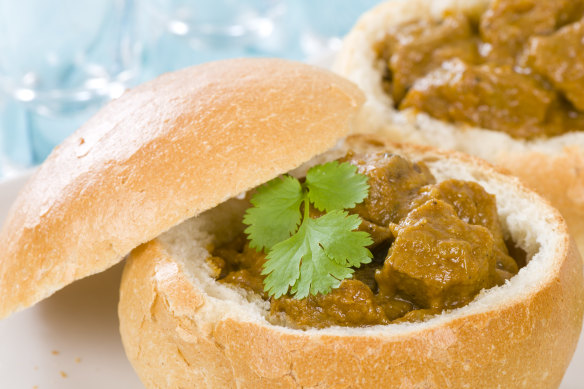
Find the best bunny chow in its birthplace of Durban.Credit: iStock
The country’s Indian heritage is summed up in bunny chow: a half- or quarter-loaf of bread hollowed out and filled with curry. Legend has it the dish was created as a portable lunch for the indentured labourers from India who came to work on sugar cane plantations in the 19th and 20th centuries. The best “bunny” is found in its birthplace, Durban. Can’t settle on a filling? Order one of each – including beans and prawns – with a “flight” of mini bunnies from House of Curries in Morningside, an affluent suburb of Durban. See visitdurban.travel
Next train departing at wine o’clock
At harvest time, baboons feast on the Pinotage grapes ripening on the slopes of the Franschhoek Valley in the Cape Winelands. They’re deterred with drums and vuvuzelas, a type of horn, and the fruit of the vine is all yours as you hop on and off the Franschhoek Wine Tram at vineyards located along a track laid more than a century ago. Choose from among five routes showcasing wineries dating back to the 17th century – no designated driver required. See winetram.co.za
Earth, wood and fire
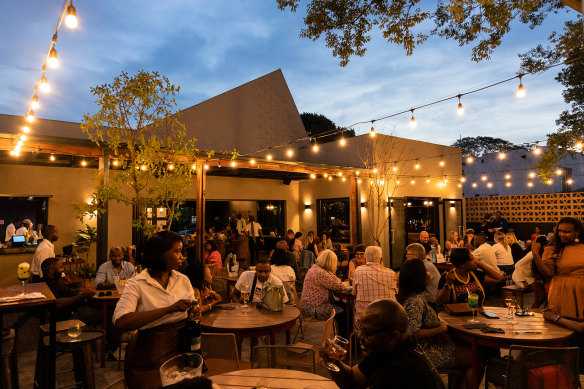
Outdoor dining at smoke.
More than just a barbecue, braaivleis – “grilled meat” – is a custom taken seriously by groups across the rainbow spectrum: building the fire, searing the boerewors (“farmer’s sausage”), smothering the pap (maize porridge) with chakalaka (spicy sauce). Smoke, a restaurant in Pretoria, elevates the experience with fare that’s wood-smoked or cooked on a fire pit or charcoal grill. Don’t miss their beef fillet with bone marrow fritters and sourdough braai broodtjies (cheese and tomato toasties). See smokecapital.co.za
The art and soul disciple
Where the sardines run
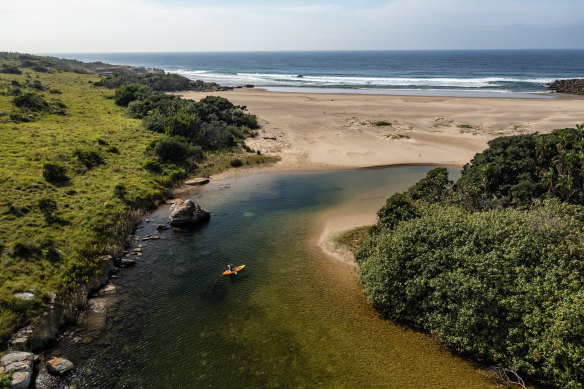
GweGwe Beach Lodge in Mkambati Nature Reserve.
Replenishment awaits on the empty shores of the Wild Coast, five hours’ drive south of Durban. Spend the day swimming in the marine protected zone, picnicking on a secluded beach, or watching the sardine run (mid-June to mid-July) from your elevated deck at GweGwe Beach Lodge in Mkambati Nature Reserve. Set above a river mouth, the newly opened lodge will also replenish the community by creating jobs, paying lease fees and making use of community-owned businesses. See naturalselection.travel
It’s a hoot
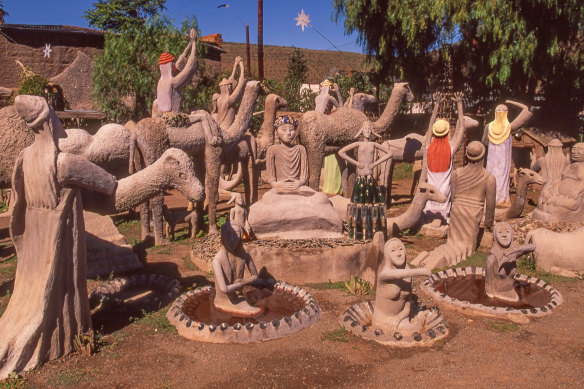
A hoot of a time … The Owl House museum.Credit: iStock
Mermaids, camels, Sphinx-like creatures, pilgrims – and owls, of course – throng the garden of The Owl House in the Karoo town of Nieu Bethesda. Constructed with the help of labourers, this cement-and-glass cosmology was the home and life’s work of Helen Martins, South Africa’s most famous outsider artist. Martins, who took her life in 1978, inspired South African playwright Athol Fugard’s The Road to Mecca. See theowlhouse.co.za; nieubethesdatourism.co.za
South Africa to a tea
Tea-making is a meditative ritual along the rooibos trail in the Cedarberg – the only place in the world where this crop is successfully cultivated. Caffeine-free and packed with antioxidants, this Cape Floral Kingdom fynbos species bears a Protected Designation of Origin status (alongside the likes of champagne). Sip a soothing brew during a tea tasting session at Skimmelberg and take a guided walk on the farm to see rooibos growing wild. See skimmelberg.co.za
Gold in them thar hills
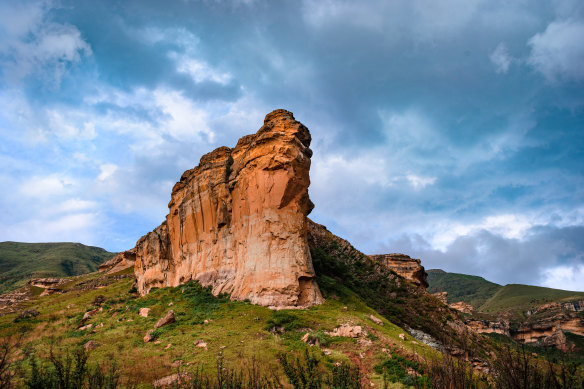
The Brandwag Buttress rocky outcrop near Clarens lights up at sunset.Credit: iStock
Immortalised by South African landscape artist Jacobus Pierneef, the Maluti Mountains have long drawn artists to the Free State town of Clarens. At dawn and dusk the sandstone cliffs in nearby Golden Gate Highlands National Park glow from within, sparking artistic imagination. Galleries line the town’s streets with Clarens Art Festival (with music and film are also featured on the program) held annually. See clarenssa.co.za; clarensartsfestival.co.za
Going, going, gone fishing
No sound emanates from the dewy valleys of Magoebaskloof/Haenertsburg bar the soft whip of the fishing line and the faint splash of the fly landing on water. Known as the “Land of the Silver Mist”, this secluded hamlet on the north-eastern tip of the Drakensberg range in Limpopo province is a dream for fly-fishers and those seeking solitude. No bites? Join a guided bird-watching walk, forage for fungi with a mushroom expert, and see the world’s tallest planted tree – an Australian eucalyptus saligna. See magoebasklooftourism.co.za; htatrout.co.za
The history and culture buff
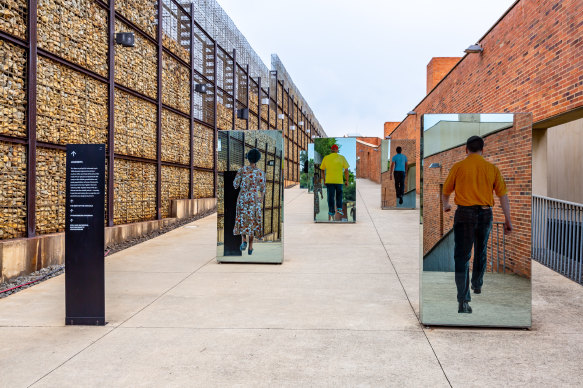
Entrance to Johannesburg’s Apartheid Museum.Credit: iStock
Journey back to South Africa’s notorious past
Your ticket to Johannesburg’s Apartheid Museum – stamped either “Whites” or “Non-Whites” – indicates which entrance you should use, and sets the tone for a weighty but essential exploration of the political system that forged modern-day South Africa. Plan to spend at least two hours here. See apartheidmuseum.org
In the footsteps of Zulu
The rolling green hills of the KwaZulu-Natal Midlands are irreconcilable with the bloodshed that occurred here during the 1879 Anglo-Zulu War. Retrace the footsteps of Zulu Impis along the Fugitives Trail, along which they chased retreating British soldiers during the Battle of Isandlwana; then enjoy modern hospitality on a visit to a craft co-operative in Nondweni village. See wowzulu.co.za
Preserving memory
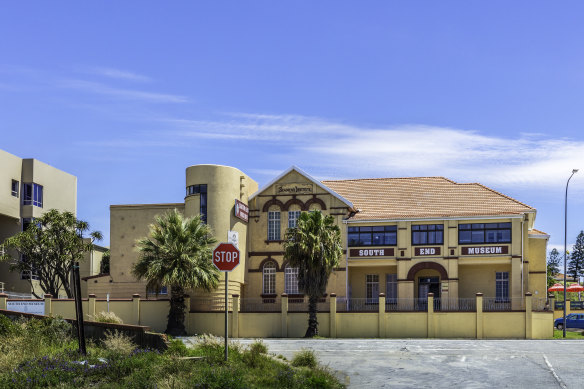
South End Museum documents the stories of former residents of Gqeberha’s (Port Elizabeth) “District Six”.Credit: iStock
You’ll have to conjure historic South End – Gqeberha’s (Port Elizabeth) “District Six” – in your imagination: the vibrant, multicultural precinct was razed and its residents banished to segregated suburbs during apartheid. But its story is documented in exhibitions and shared by former residents who welcome visitors to the beautifully curated South End Museum. See southend-themuseum.co.za
Witness Madiba’s commanding presence
Mandela presides, fittingly, over South Africa’s seat of government, Pretoria’s Union Buildings. Here, his likeness – a nine metre-high bronze statue – overlooks the grounds where thousands of jubilant onlookers gathered to witness his inauguration. Get a close-up of the Sir Herbert Baker-designed buildings before snapping your picture with the larger-than-life president. See gauteng.net
Gandhi: the South African years
The seeds for Mahatma Gandhi’s passive resistance philosophy, Satyagraha, germinated in South Africa, where he spent decades advocating against the subjugation of Indian immigrants. While in Johannesburg, he stayed with Jewish architect and fellow activist Hermann Kallenbach in the rondavel-shaped house Kallenbach had designed. Now a guesthouse and museum, Satyagraha House is positively Gandhi-esque in its tranquillity. See satyagrahahouse.com
The return visitor
From a mountain high
The mountains girdling the country’s vast central plateau reach their zenith in KwaZulu-Natal’s Drakensberg (“Dragon Mountains”) where South Africa’s highest peak, Mafadi, adjoins Lesotho’s border. Most visitors head to the Central Drakensberg to hike or simply gaze upon the glory of Champagne Castle, Giant’s Castle and Cathedral Peak – jewel formations in a range that has a Zulu name, uKhahlamba, meaning “barrier of spears”. See drakensbergexperience.com
…to a desert low
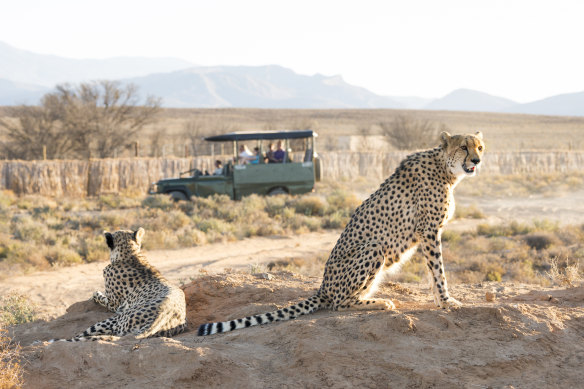
Karoo, a sprawling semi-desert, is a destination unto its own.Credit: iStock
Don’t prejudge the Karoo, a sprawling semi-desert encompassing about one third of the country’s interior. Typically regarded as a thoroughfare between Johannesburg and Cape Town, it’s a destination unto its own – cloaked in unique biomes and populated with wildlife reserves, daubed with rock art and dotted with historic towns full of architecture that encodes the country’s settlement history. For a dash of romance, glide through this otherworld on the iconic Blue Train. See bluetrain.co.za
Go back to where it all began
Keen to return to your roots? The world’s largest concentration of human ancestral remains is contained within the UNESCO World Heritage-listed Cradle of Humankind, just 45 minutes from Johannesburg. Undergirded by limestone caves and encompassed within the Greater Cradle Nature Reserve, the site is also home to leopards and brown hyena. Follow in your ancestors’ footsteps on Hartley’s Safari’s Human Origins tour. See hartleys-safaris.co.za
Where hippos and crocs rock
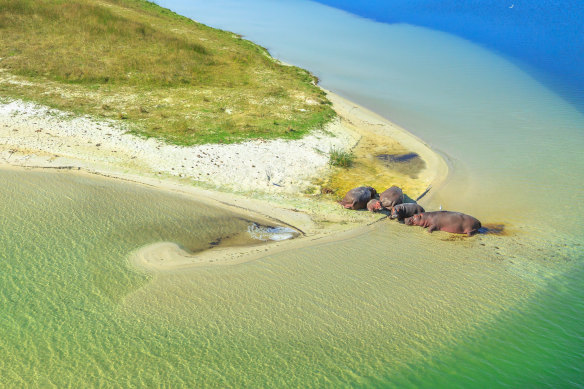
Cape hippopotamus rest on the shore of St Lucia Estuary within iSimangaliso Wetland Park.Credit: iStock
The UNESCO World Heritage-listed iSimangaliso (formerly St Lucia) is an imbroglio of swamp forests, mangroves, grasslands, towering dunes, mountains and coral reefs stretching for 220 kilometres along KwaZulu-Natal’s northern coastline. Keep your eyes peeled for hippos and crocs in the estuaries, elephants and rhinos on the lakeshores, and marine life including whale sharks (November to April) in the bays. See isimangaliso.com
Head off on the red dune route
Brick-red dunes ripple across the Northern Cape, South Africa’s largest – and least populated – province. Along the borders with Namibia and Botswana is the UNESCO World Heritage Khomani San Cultural Landscape; evidence of human occupation dating from the Stone Age nestles within its drifts. Learn about Khomani San culture at the community-owned !Xaus Lodge, and see the black-maned Kalahari lions of Kgalagadi Transfrontier Park on a self-drive adventure arranged by Travel Africa Your Way. See travelafricayourway.com.au
The Mandela years: A timeline
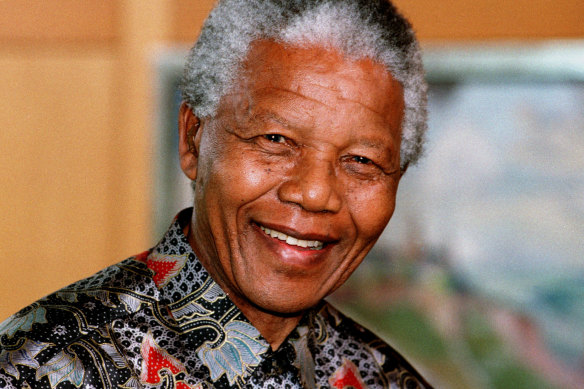
South African anti-apartheid activist Nelson Mandela.Credit: Getty
1918 Nelson Rolihlahla Mandela is born on July 18 in Mvezo in the Eastern Cape
1944 Co-founds the African National Congress (ANC) Youth League
1964 Sentenced to life imprisonment by the apartheid regime
1990 Released from Victor Verster Prison
1993 Awarded the Nobel Peace Prize jointly with South African President FW de Klerk
1994 Inaugurated president of South Africa
1999 Steps down after one term; launches the Nelson Mandela Foundation
2013 Dies in Johannesburg, aged 95
THE DETAILS
Fly
South African Airways relaunches flights between Johannesburg and Perth on April 28. Flights will depart thrice-weekly, with connections from eastern states on Virgin Australia. See flysaa.com; virginaustralia.com/au
Visit
Australians don’t require a visa to visit South Africa. Car hire is widely available and Uber is reliable. Enhance your personal safety by using accredited operators and not venturing out alone at night. Check for security updates on the Australian Government’s Smart Traveller travel advisory site. See smarttraveller.gov.au
Health
Malaria prophylaxis is recommended in north-eastern KwaZulu-Natal and parts of Mpumalanga and Limpopo. The water is safe to drink. See southafrica.net
Catherine Marshall is a dual South African-Australian citizen. She has travelled in South Africa both independently and as a guest of South African Tourism and other operators.
Sign up for the Traveller Deals newsletter
Get exclusive travel deals delivered straight to your inbox. Sign up now.